Accessory structures of the skin
1/21
There's no tags or description
Looks like no tags are added yet.
Name | Mastery | Learn | Test | Matching | Spaced |
|---|
No study sessions yet.
22 Terms
Nails
Tightly packed, hard, dead, keratinized epidermal cells

Nail body
Visible part of the nail
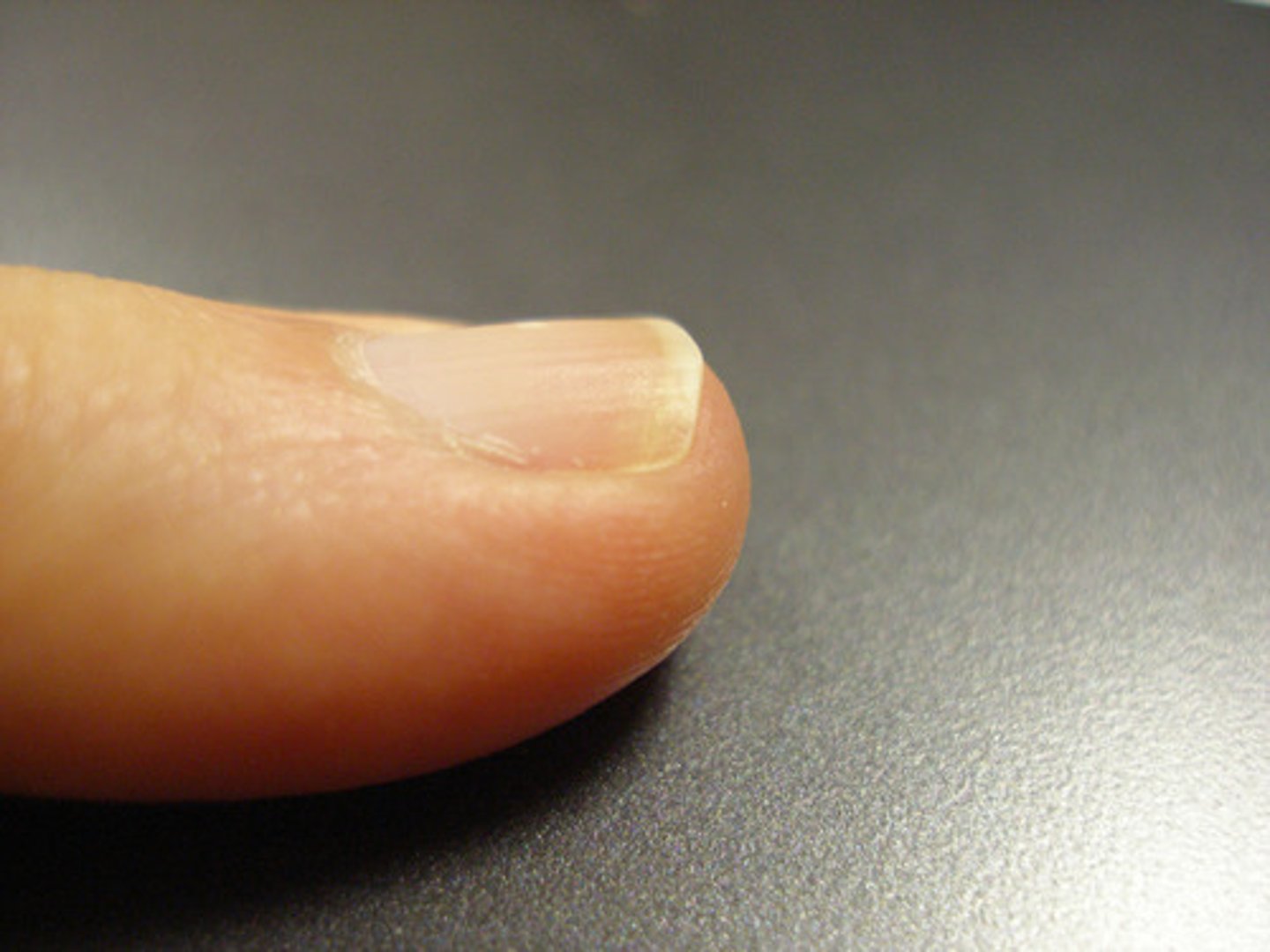
Nail Root
Portion that is not visible (A)
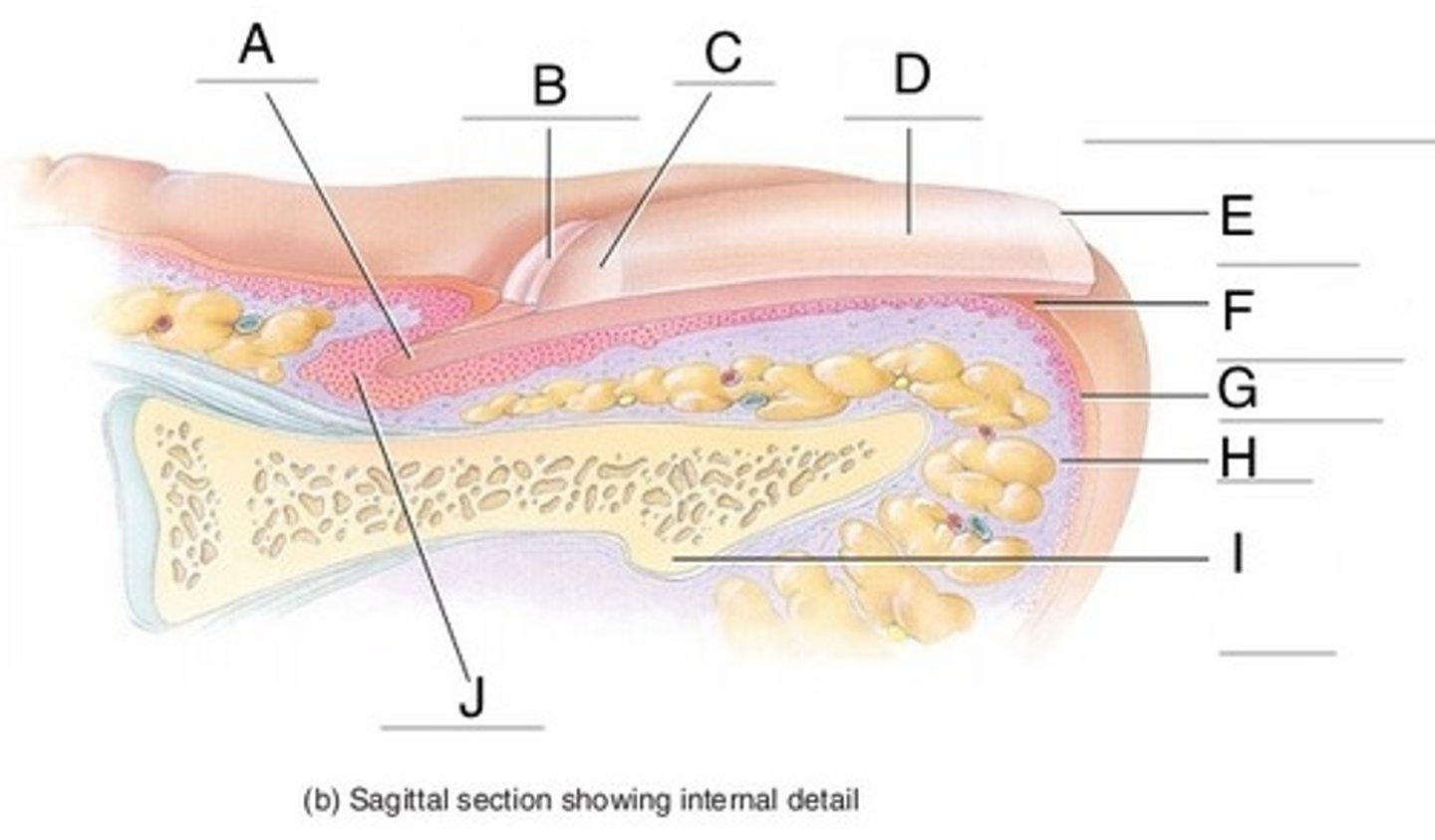
Eponychium
- Cuticle
- Stratum corenum of the epidermis

Lunula
Thick white part of the nail
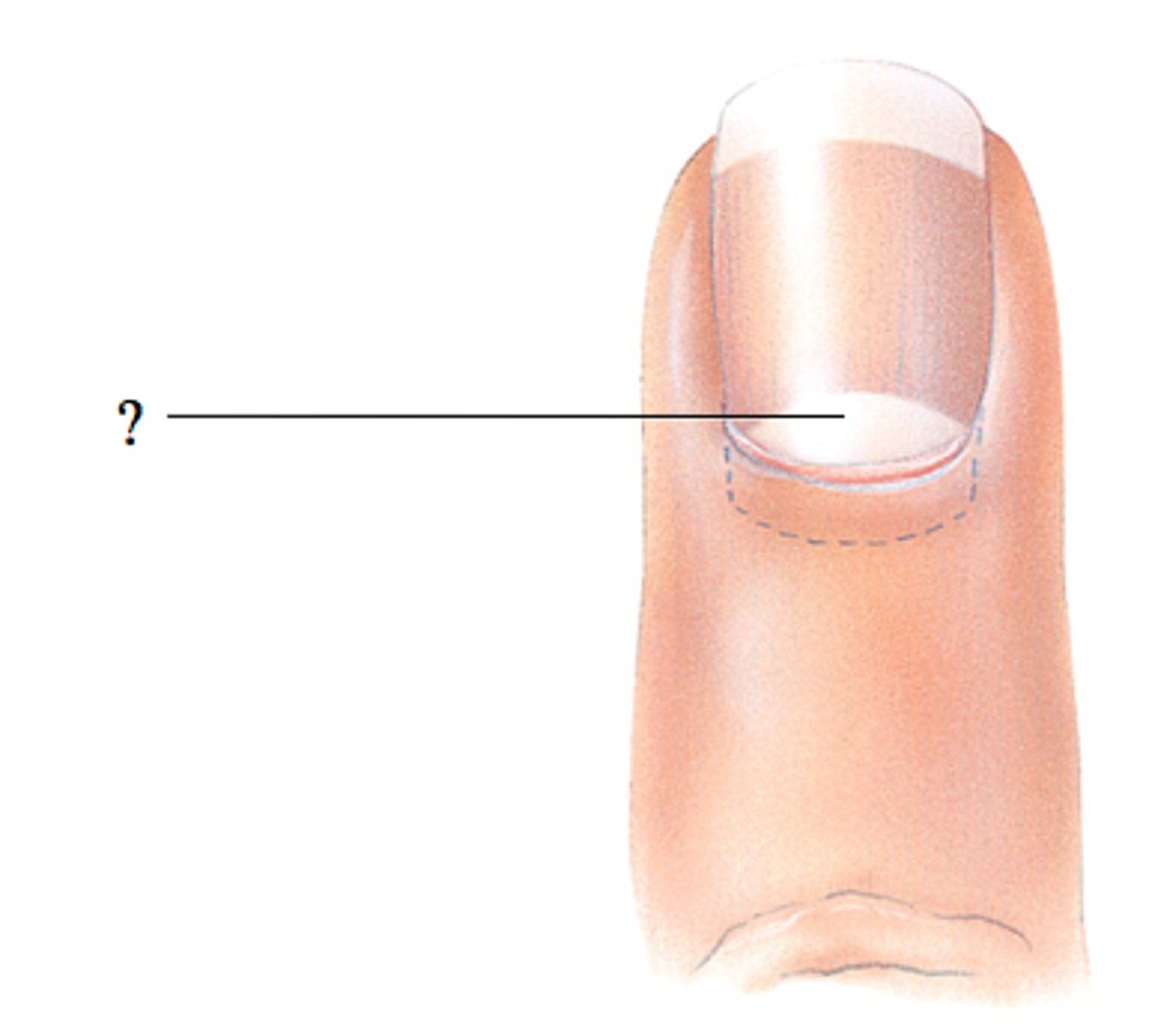
Nail Bed
Skin below nail plate
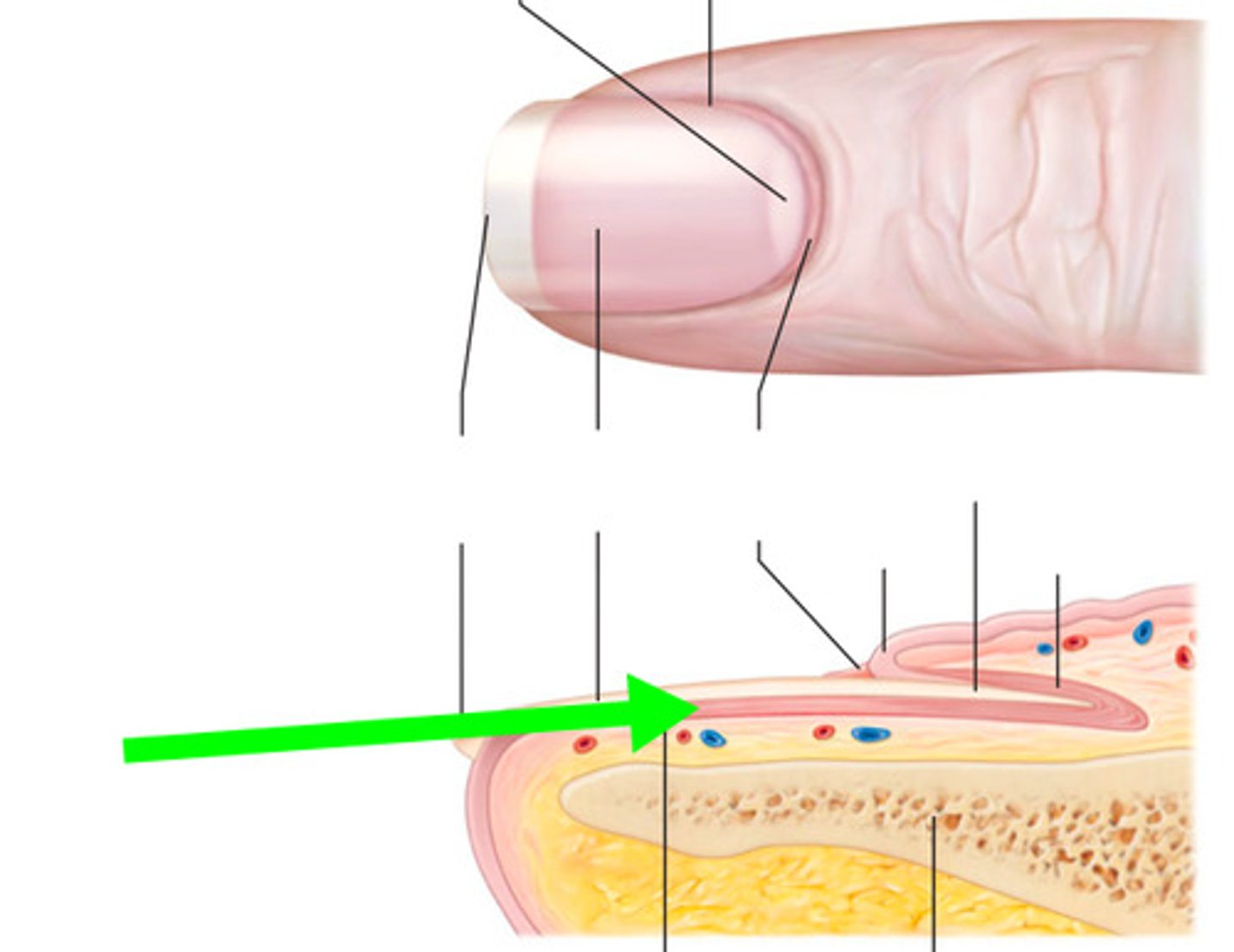
Free Edge
Extends past the finger or toe
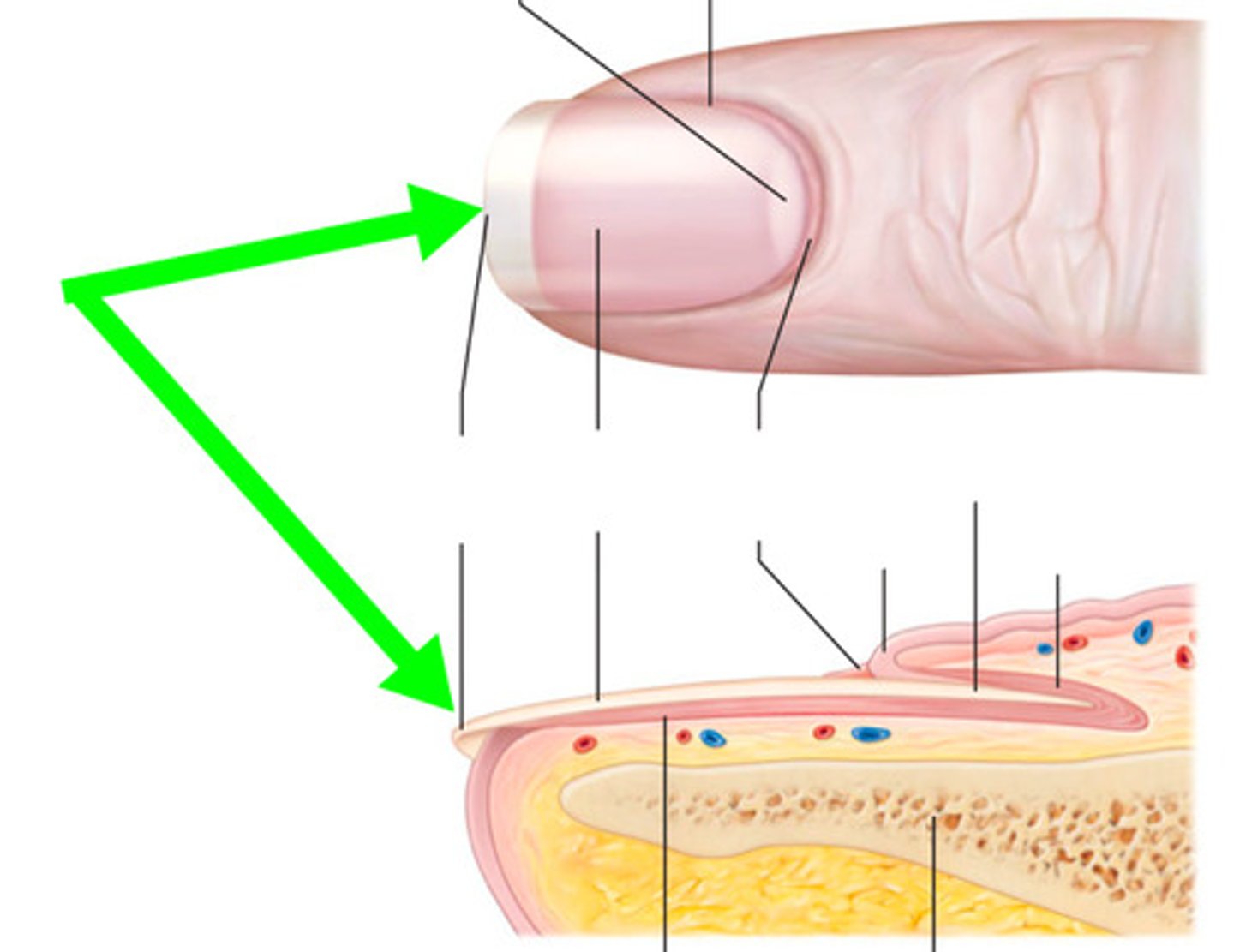
Hyponychium
Secures nail to the fingertip
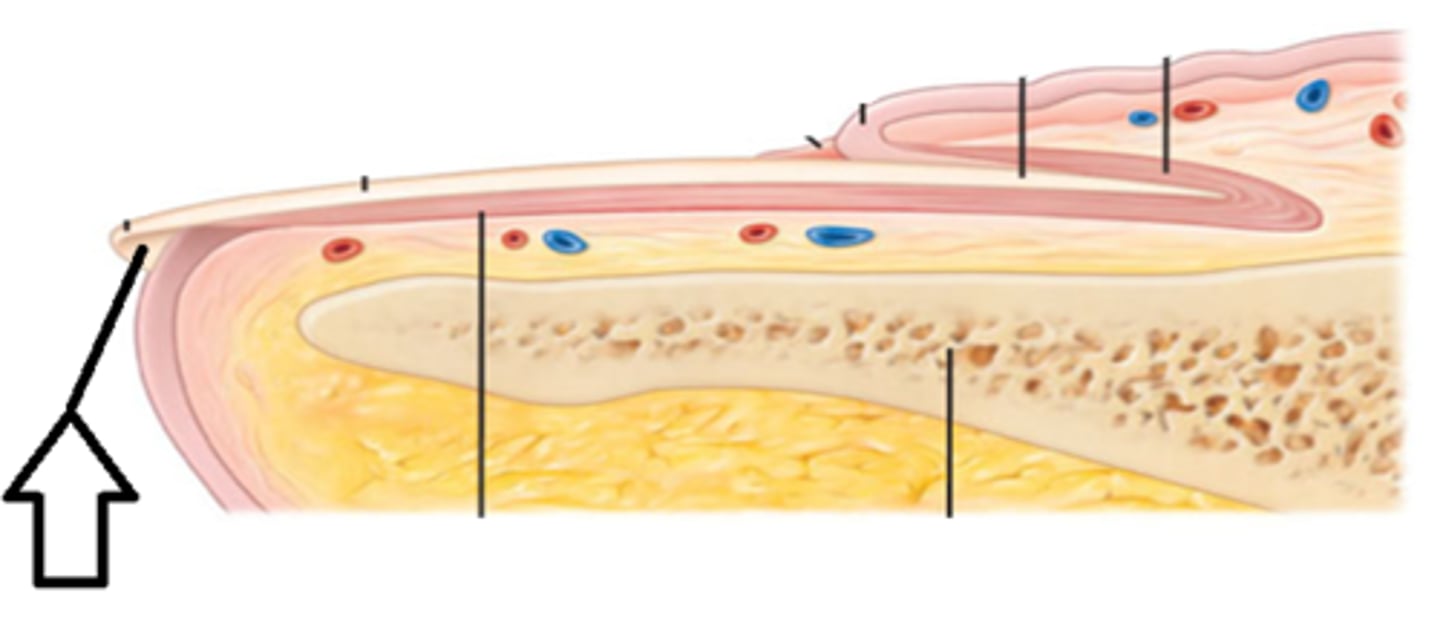
Nail Matrix
- Epithelium proximal to the nail root
- Contains dividing cells (J)
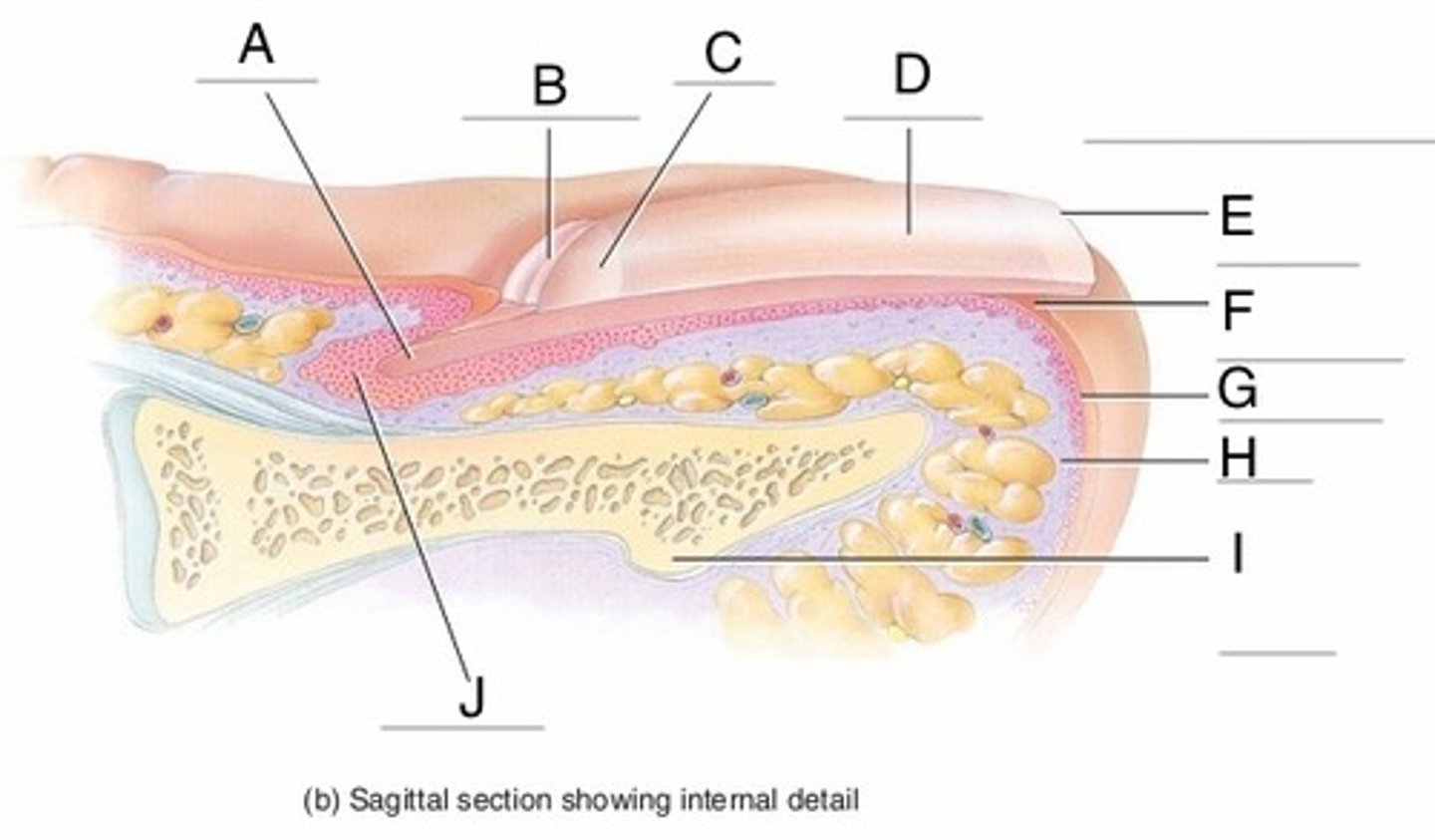
Phalanx
- Finger bone (I)
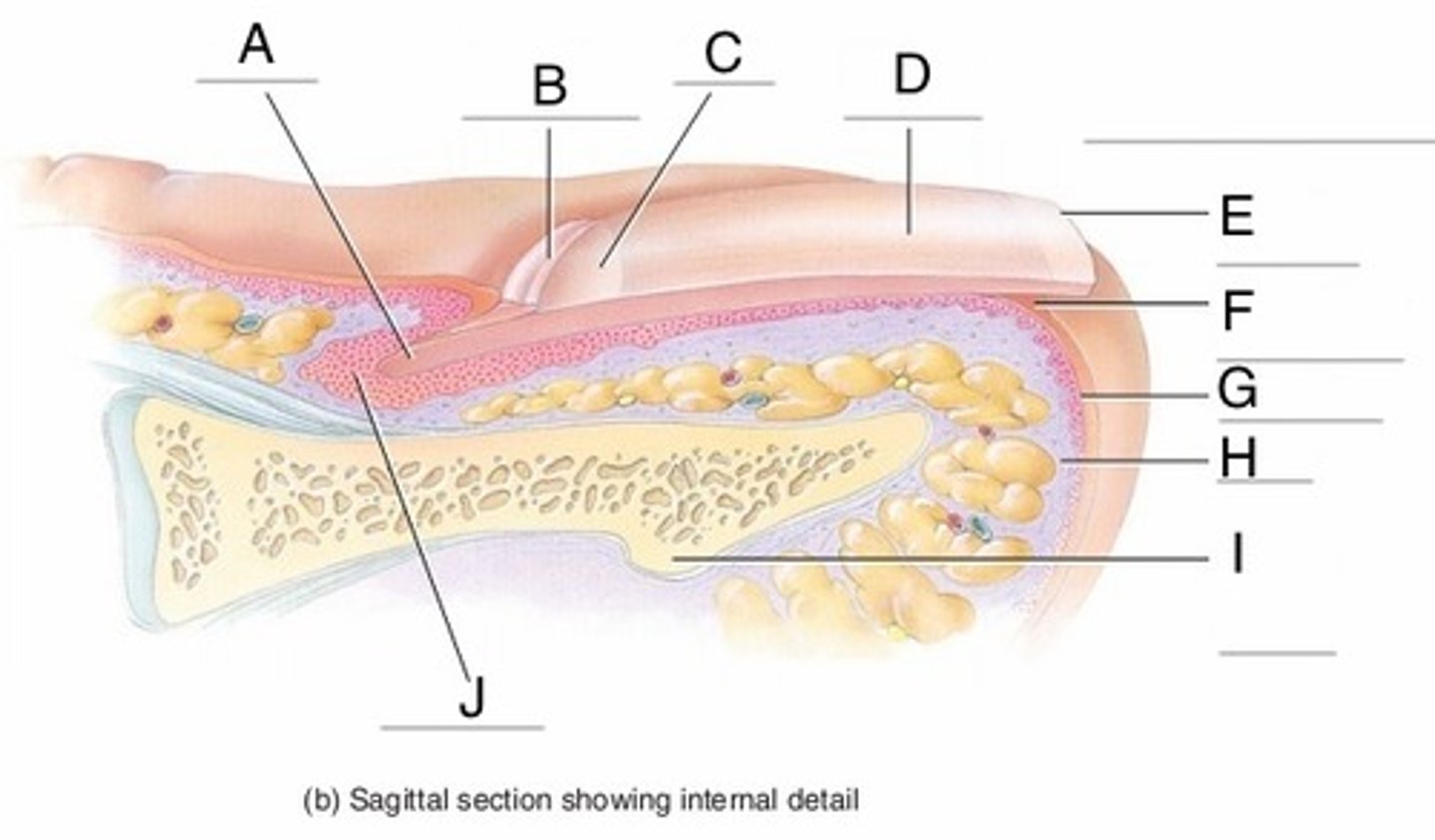
Dermis
- H
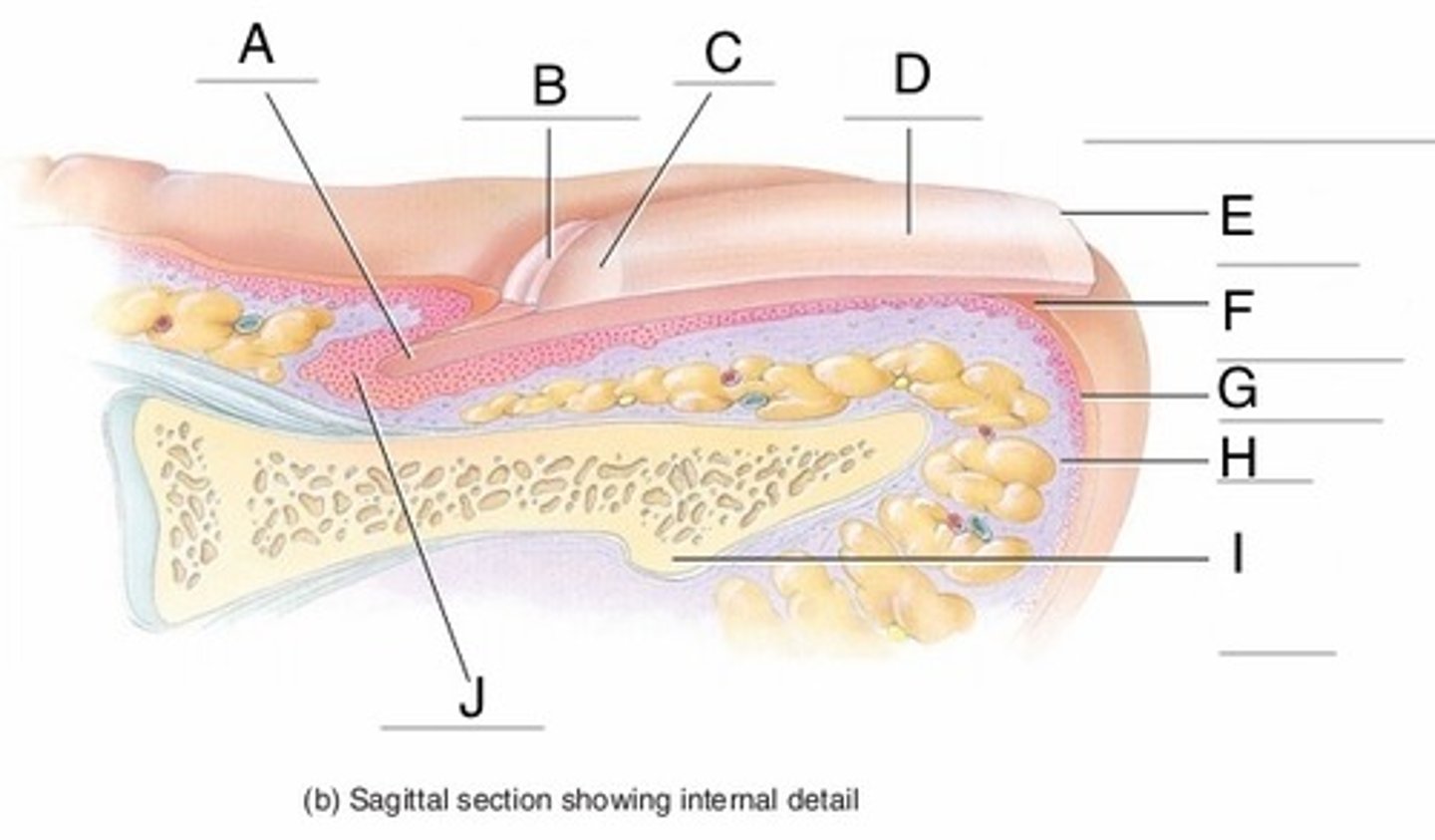
Epidermis
- G
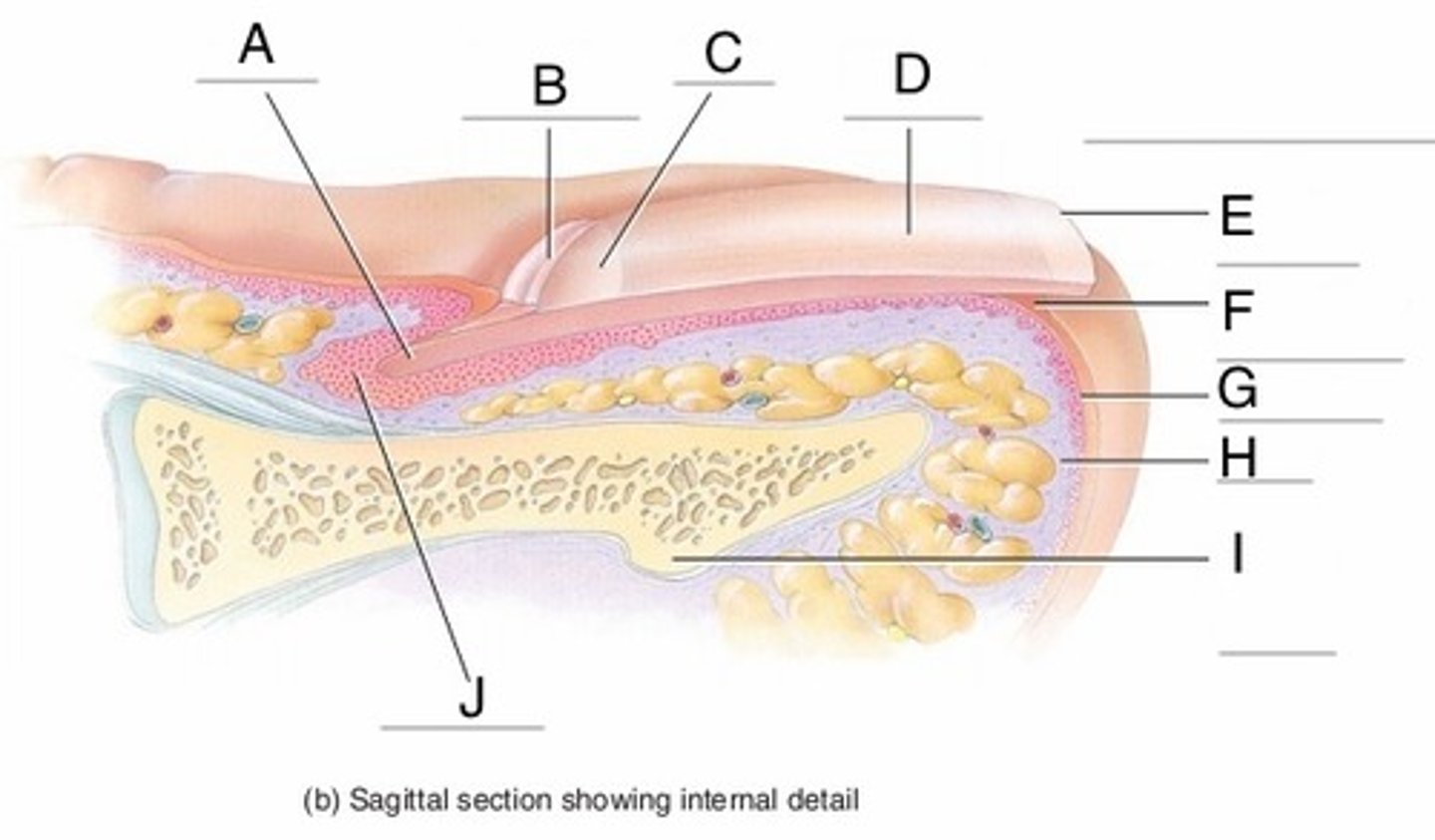
Hair follicle
cavity or sac from which the hair originates
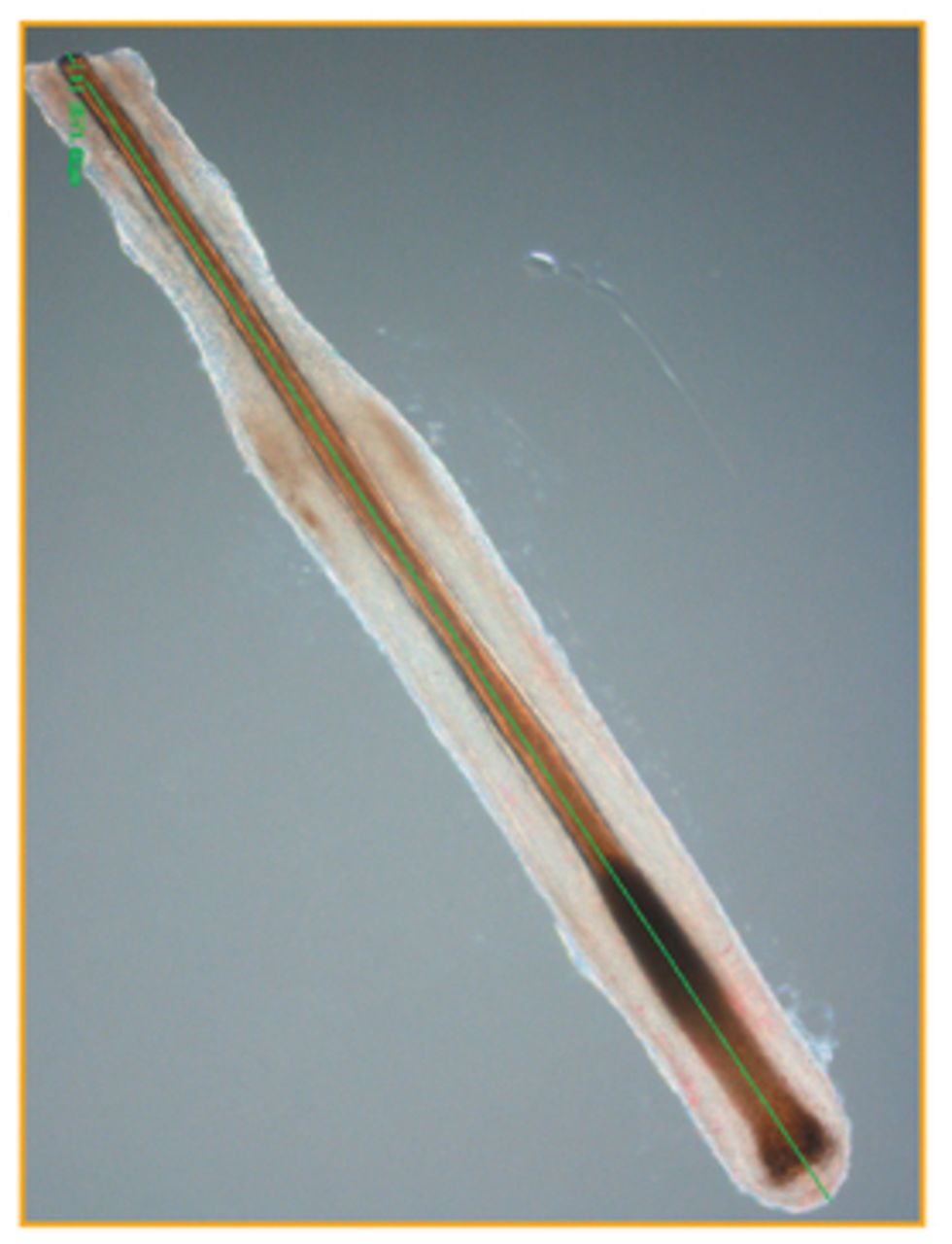
Hair shaft
part of hair that is above the epidermis but not anchored to the follicle
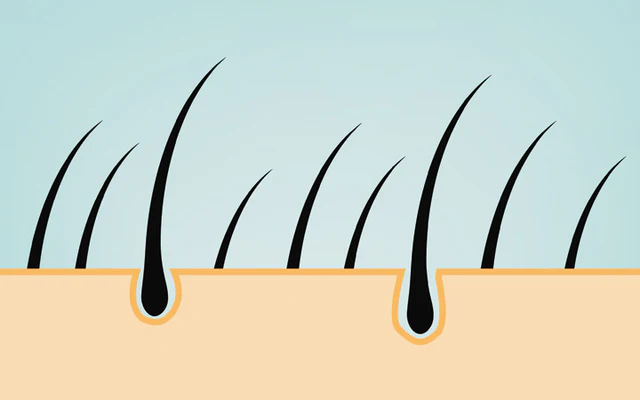
Hair root
part of hair that is below the epidermis anchored to the follicle

Hair papilla
mass of connective tissue, blood capillaries, and nerve endings at the base of the hair follicle

Hair function
protects the body (ex. eyebrow hair preventing sweat and other particles from falling into the eyes)
Sensitive to air movement or other disturbances in the environment
Insulation to keep the body warm
How does the nail root contribute to nail growth?
The nail root has a matrix of proliferating cells from the stratum basale that enables the nail to grow continuously
Eccrine sweat glands
coiled, exit at skin pores
most abundantly located in the palms of the hand, the soles of the feet, and the forehead

Apocrine sweat glands
larger, coiled, exit into hair follicle
Usually associated with hair follicles located in densely hairy areas such as the armpits and genitals

Why do apocrine glands produce an odor?
Apocrine sweat includes organic compounds that make the sweat thicker and subject to bacterial decomposition, leading to an odor
Sebum
a mixture of lipids that are secreted onto the skin, lubricating the dead and dry layer of keratinized cells, keeping it pliable